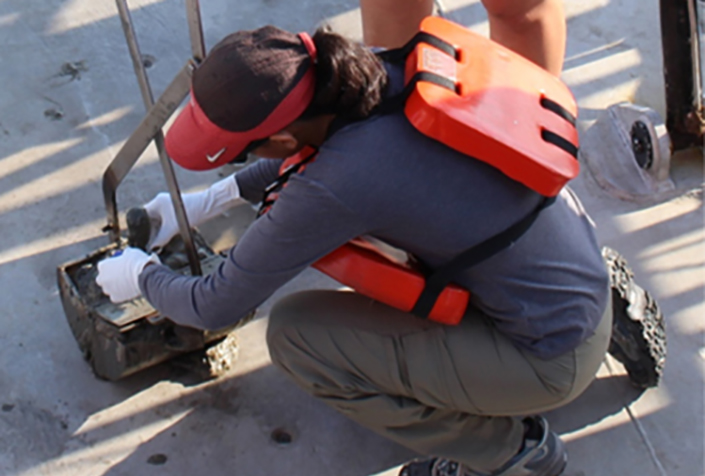Human activity generates about 25% of lead in Galveston Bay, study says

Approximately 25 percent of the lead in Galveston Bay is from human sources, a new study says.
This study used state-of-the-art geochemical modeling for environmental analysis. Scientists from the University of Houston, New Mexico State University, Texas A&M University, and Texas A&M University at Galveston used a novel method of lead isotope measurement to “fingerprint” lead sources to Galveston Bay.
Despite the high proportion of lead from human influence, the study finds overall lead concentrations to be below benthic (bottom-dwelling) ecology toxicity thresholds set by the National Oceanic and Atmospheric Administration (NOAA).
“Galveston Bay is such a rich system to study because it’s a natural estuary that also has strong anthropogenic influences because of industrialization along its shorelines,” Jessica Fitzsimmons, co-author and associate professor in Texas A&M’s Department of Oceanography, says. “So, it is a perfect place to study contaminant cycling within natural systems.”
While there are no known lead ore deposits in Galveston Bay, there are other sources of naturally weathered lead that enter the system through river water. Despite this, the scientists found that bay sediment leaches (weak chemical dissolutions which access the surface-most portions of the sediments) were approximately 84 percent anthropogenic, while the overall bulk sediments were mostly derived from natural lead sources.
This research emphasizes that sediment leaches access the same surface-most pools of lead that biota might access within Galveston Bay sediments, and these lead pools are dominantly human-supplied.
Samples for this study were collected from tributaries that drain into Galveston Bay, the San Jacinto and Trinity Rivers and Buffalo Bayou, and across the entirety of Galveston Bay at various “bay stations”. Collection took place quarterly between June 2017 and June 2019 and the researchers also used a previously collected (July 2016) sediment core. The core sample (E3) was used to compare current lead levels to what was found in the core sample dating back 150 years.
As the scientists expected, lead levels steadily rose over the last 150 years, which coincides with human industrial growth in the area. However, those levels began to level off in the 1990s, possible due to policy changes such as the elimination of leaded fuels in the United States.
“We were hoping that lead concentrations in the last couple decades would have gone back down, but we did not see as much of the downturn as we might have hoped, given the recent clean-up efforts in Galveston Bay,” Fitzsimmons says.
This research was funded by the Galveston Bay Estuary Program and the Texas A&M Triads for Transformation Program.

